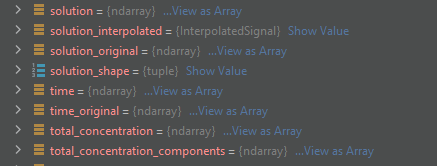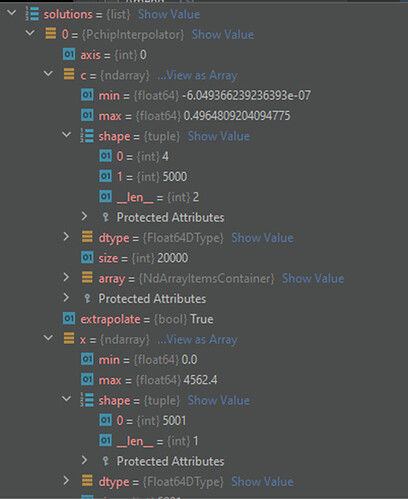Hi there,
I am running simulations with CADET-Process and I would like to export the chromatograms (e.g. as np.arrays). I am only modeling one unit operation (chromatographic column), so I have input, column and outlet). I store the results in the object simulation_results as:
simulator = Cadet()
simulation_results = simulator.simulate(process)
You will see I have quite a lot of questions below, since I really want to understand how Cadet works and export my results as accurate as possible. I hope no one gets overwhelmed by answering to this issue ![]()
![]()
- List item
-
First question, is there any direct method associated with exporting the chromatogram data? (similar as there is the
.plot()function and the @plotting.create_and_save_figure decorator for exporting the chromatograms figures) -
I’ve seen that withinin the
simulation_results.solution.column.outletobject the results are stored. However, I have some questions since I see that there are several attributes stored within this class:

-
Which are the differences between
solutionandsolution_original? The times associated with these two should betimeandtime_original, respectively? -
What about the values stored in
solution_interpolated? are they used somewhere (during the simulation, plotting,…)?
While trying to understand how these values were calculated I saw the following:
I have 4 components, and insidesolution_interpolated.solutionsI have 4 lists. At the same time inside each list I have the arrayc(with [4,1] shape) andx(which I assume it’s time)
c has shape [4, 5000], however x [5001, 1]
Is there some documentation about the type of interpolation method used here?
-
As far as I remember from the Cadet Workshop 2022, the default discretization in Cadet is 1 axial cell per second. Is this correct? How could I tune this parameter?
-
I am seeing the array I get from
.solutionmatches with.total_concentration_components. Is this because I only have 1 unit operation in my example? or is there some difference between them?
Finally, my Pycharm console in debug mode was crushing all the time whenever I extend the visualization for some variables, the session broke under this error:
Process finished with exit code -1073741819 (0xC0000005)
Did someone ever experience this?
I am assuming this is happening because simulation_results is a very heavy object, but I would like to hear if this is common/expected.
Thank you very much for taking your time in answering my questions!!
Have a nice evening,
Ignasi
